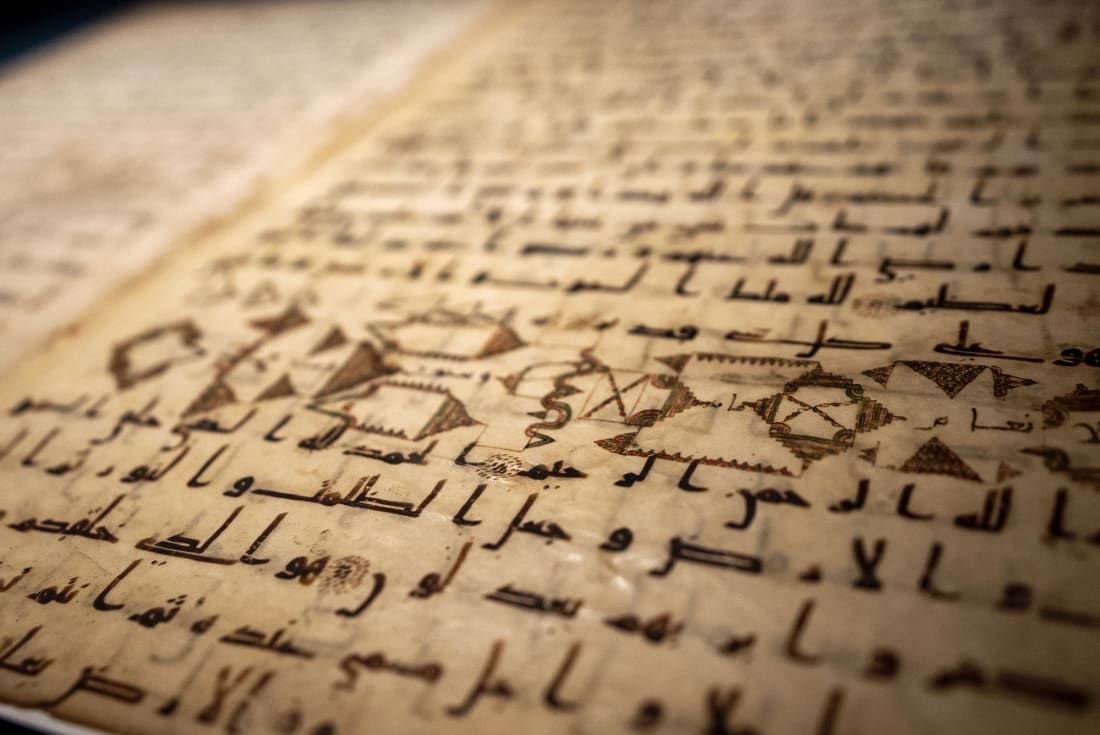The Louvre Museum in Paris houses treasures found on the Silk Road in Uzbekistan. The one displayed is the oldest sheet of the Quran.
reported from NC, Thursday (15/12/2022) an exhibition entitled “The Splendours of the Oases of Uzbekistan” presents more than 170 works that offer the past of the country of Uzbekistan. This includes its famous frescoes, Buddha statues, and artefacts from ancient civilizations.
The exhibition was co-curated by archaeologist Rocco Rante, who has been digging since 2009 in the oasis of Bukhara in Uzbekistan. The area was once an important stop on the Silk Road trade route that ran through Uzbekistan hundreds of years ago, connecting the Mediterranean to the Far East.
The main attraction of the exhibition are the two pages of the Koran Katta Langar, one of the oldest manuscripts of the Koran in the world dating from the earliest days of Islam. It was kept for centuries in a mausoleum in a small village perched on top of a mountain.
“With the help and support of our Uzbek colleagues, we have discovered and restored one of the oldest Qurans from the 8th century, which is a major discovery,” Rante said.
 Exhibition “The Splendors of the Oases of Uzbekistan” at the Louvre Museum Photo: (Li-Lian Ahlskog Hou/ CNN) Exhibition “The Splendors of the Oases of Uzbekistan” at the Louvre Museum Photo: (Li-Lian Ahlskog Hou/ CNN) |
This exhibition in partnership between the Louvre Museum and the Foundation for the Development of Arts and Culture of Uzbekistan will take you on a journey of the political and historical life of Uzbekistan over 1,600 years from the 1st century BC.
According to Yannick Lintz, co-curator and former director of Islamic Arts at the Louvre, the Silk Road was the centerpiece of the exhibition, highlighting the remains found along its caravan route.
“Everyone knows that the road is one of economic exchanges between East and West, but it is also an intellectual, artistic and technological road,” Lintz said.
Lintz hopes to take people back in time with treasures from the periods of Alexander the Great, Genghis Khan and Amir Timur (also known as Tamerlane), who founded the vast Central Asian Empire in the 14th century .
“It was important for me to show visitors that we can have a cultural, religious and artistic dialogue in this part of the world between China, India and Iran, because Uzbekistan is in the middle of that,” said said Lintz.
According to Yannick Lintz, co-curator and former director of Islamic Arts at the Louvre, the Silk Road was a centerpiece of exhibits showcasing relics found along its caravan route.
“Everyone knows that the road is one of economic exchanges between East and West, but it is also an intellectual, artistic and technological road,” Lintz said.
 The oldest Koranic sheet of the exhibition “The splendours of the oases of Uzbekistan” at the Louvre Museum Photo: (Li-Lian Ahlskog Hou/ CNN) The oldest Koranic sheet of the exhibition “The splendours of the oases of Uzbekistan” at the Louvre Museum Photo: (Li-Lian Ahlskog Hou/ CNN) |
Lintz hopes to take visitors back in time with treasures from the periods of Alexander the Great, Genghis Khan and Amir Timur (also known as Tamerlane), who founded the vast Central Asian Empire in the 14th century .
“It was important for me to show visitors that we can have a cultural, religious and artistic dialogue in this part of the world between China, India and Iran, because Uzbekistan is in the middle of that,” said said Lintz.
Another interesting treasure from the Louvre Museum
In collaboration with experts from Uzbekistan, the Louvre carried out major restoration work on numerous exhibitions. Among the items to be restored is the 14th-century Gūr-i Amīr gate of the Mausoleum of Tamerlane in Samarkand, a city in southeastern Uzbekistan.
 The painting of ambassadors at the exhibition “The splendours of the oases of Uzbekistan” at the Louvre Museum Photo: (Li-Lian Ahlskog Hou/ CNN) The painting of ambassadors at the exhibition “The splendours of the oases of Uzbekistan” at the Louvre Museum Photo: (Li-Lian Ahlskog Hou/ CNN) |
There are also preserved ancient paintings, including a monumental fresco from the residence of Prince Varakhsha dating from the 4th century. Located northwest of the oasis of Bukhara, the city of Varakhsha was once occupied by the Sogdians, an ancient people who lived on the Silk Road.
The famous 8th-century Sogdian fresco “The Ambassadors’ Painting” is also on display, along with a series of frescoes depicting the ancient city of Afrasiab. Part of ‘The Painting of the Ambassadors’ is lost and its meaning is only partially understood, but it is still considered a masterpiece. This painting is like the Uzbek Mona Lisa.
Watch the video “Hotman Paris fusses over Penal Code, Menkumham sarcastically as if the world wants to end it“
[Gambas:Video 20detik]
(sym/fem)





